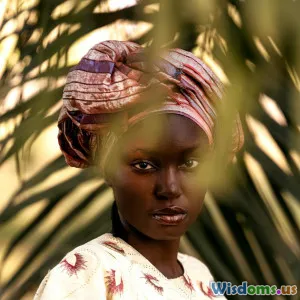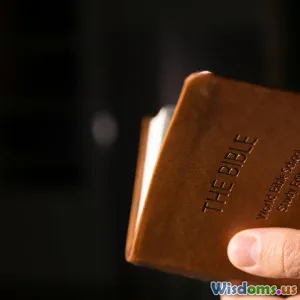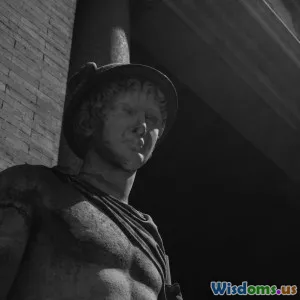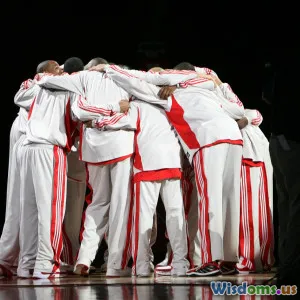
How Ancient Myths Shape Modern Beliefs
9 min read Explore how ancient myths continue to influence modern beliefs about mysteries and the supernatural. (0 Reviews)
How Ancient Myths Shape Modern Beliefs
From the depths of ancient history to the screens of our smartphones, myths have remained a constant companion to humanity’s endless fascination with the unknown. In exploring mysteries and the supernatural, ancient myths are not relics of the past; they actively shape how we interpret reality, influence our beliefs, and frame our collective imagination today. This article will delve into how ancient myths continue to mold modern supernatural beliefs, offering insights into cultural dynamics, psychological drivers, and even scientific curiosities.
Introduction: The Enduring Power of Myth
Are ancient myths just folklore, or do they hold clues that shape our worldview even today? From Greek gods wielding thunderbolts to Norse tales of cosmos-ending Ragnarok, myths encapsulate humanity's attempts to understand the cosmos, fate, and the supernatural. Despite advances in science and technology, myths retain power, particularly when related to mysteries and supernatural phenomena such as ghosts, paranormal activity, and unexplained events.
As Carl Jung famously posited, myths are manifestations of the collective unconscious—deep archetypal patterns that resonate with our shared human psyche. Thus, their enduring impact on modern beliefs is not coincidental but intrinsic to how we process the unknown.
The Roots of Modern Supernatural Beliefs in Ancient Mythology
Mythology as a Framework for Understanding the Universe
Long before empirical research defined natural laws, myths provided frameworks for humans to explain phenomena, from thunderstorms to death. Consider the Egyptian god Osiris, associated with the afterlife, whose myth helped Egypt shape a belief system including resurrection and eternal life. Similarly, the Greek underworld presided over by Hades became a foundation for later concepts of the afterlife or hell in Christian theology.
These mythic constructs offered explanations where none existed, addressing mysteries that evoked fear and awe. Even today, the idea of spirits wandering among the living—a staple in ghost lore—is a concept rooted in myths about souls lingering after death. Such echoes demonstrate how ancient mythologies laid the groundwork for modern supernatural beliefs.
Archetypes and the Language of Supernatural Phenomena
Archetypical stories like the hero’s journey or the trickster echo in many paranormal narratives. The archetype of a ghost, for example, can be traced back to ancient tales of restless spirits such as the Greek "eidolon"—phantoms or shades haunting the living. These archetypes, deeply embedded in many cultures, inform contemporary beliefs about hauntings and possession.
Moreover, modern urban legends, such as the “vanishing hitchhiker,” clearly share traits with mythic narrative patterns, demonstrating the timeless nature of myth in shaping supernatural storytelling.
Case Studies: Ancient Myths Impacting Contemporary Beliefs
The Norse Ragnarok and Apocalyptic Fears
The Norse myth of Ragnarok describes an ultimate battle leading to the rebirth of the world after destruction. This end-times narrative parallels modern apocalyptic fears—whether from religious, environmental, or speculative technological causes. The myth’s themes of cyclical destruction and renewal resonate with contemporary beliefs in prophecy, fate, and cosmic justice.
Interestingly, groups such as neo-pagans and esoteric believers often draw on Ragnarok imagery to interpret current global tensions, demonstrating how ancient myths serve as lenses for understanding present mysteries.
Greek Mythology and Psychic Phenomena
In Greek mythology, figures like Cassandra, cursed to utter true prophecies never believed, embody themes of foresight and misunderstood supernatural knowledge. This story informs modern skepticism around psychic predictions yet preserves belief in the possibility of perceiving beyond the normal senses.
According to a 2019 study in the "Journal of Paranormal Psychology," individuals’ belief in psychic phenomena is often underpinned by cultural narratives that echo mythic archetypes. That testimony sheds light on how mythic examples influence acceptance or rejection of paranormal claims.
Psychological Underpinnings: Why Myths Persist
The Influence of Cognitive Biases and Storytelling
Humans are pattern-seeking creatures; myths offer narrative explanations that satisfy the mind’s craving for coherence. This explains the persistence of supernatural beliefs derived from myths even when scientific evidence contradicts them. For example, the confirmation bias leads individuals to interpret ambiguous events as ghostly presences, reinforcing supernatural myths.
Psychologist Carl Jung’s concepts recognize that these stories engage the unconscious mind, providing emotional and spiritual comfort. Myths about guardian spirits or divine intervention offer hope amid uncertainty.
Social Cohesion and Identity Through Shared Mythos
Myths unite communities with shared rituals, moral lessons, and worldviews. In modern societies, supernatural myths often underpin traditions—Halloween being a prime example, where Celtic and Christian myths intertwine in a contemporary ritual exhibiting ancient beliefs in spirits.
The communal aspect of myths reinforces identity and preserves continuity, giving individuals a sense of belonging within larger mysteries involving life, death, and the beyond.
Modern Science Meets Ancient Myth: The Intersection of Myth and Mystery
Though often positioned as adversaries, myth and science frequently intersect in surprising ways. Quantum physics, for instance, evokes paradoxes reminiscent of mythic visions of reality as a multilayered or illusionary experience—concepts present in Hindu cosmology and ancient Egyptian ideas of Ma’at.
Moreover, explorations of consciousness and near-death experiences have parallels with mythic themes of soul journeys, suggesting that science may, in time, provide insights that validate or reinterpret ancient supernatural myths.
Conclusion: Embracing Ancient Myths in Contemporary Mysteries
Ancient myths are far from obsolete stories confined to dusty tomes; they are dynamic narratives continuing to shape how modern humans make sense of mysteries and supernatural phenomena. These myths offer archetypical frameworks, psychological sustenance, and cultural continuity—supporting our quest to understand the unknown.
In an age of rapid scientific progress, recognizing the enduring role of myths fosters a balanced appreciation of human belief systems. Exploring ancient myths in relation to modern mysteries enlightens us about both our collective past and the evolving nature of supernatural belief.
Understanding this relationship invites us to approach myths not merely as fanciful tales but as vital cultural tools informing our ongoing journey through the cosmic enigma.
References:
- Jung, Carl G. Man and His Symbols. 1964.
- "The Role of Myth in the Modern World." Joseph Campbell Foundation. 2018.
- "Cognitive Biases in Paranormal Beliefs," Journal of Paranormal Psychology, 2019.
- "Ragnarok and Apocalyptic Symbolism in Neo-Paganism," European Journal of Religious Studies, 2021.
Rate the Post
User Reviews
Popular Posts





















